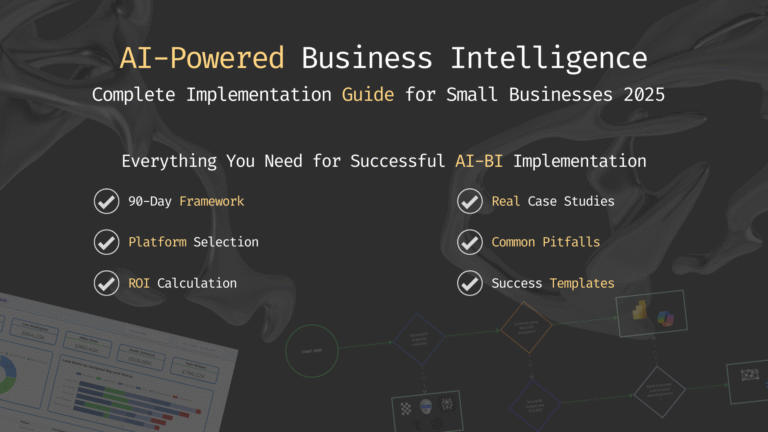In this article I will deep into the two leading cloud data platforms: Databricks and Snowflake, by examining what they are, their core components, their key differences, market insights, and a simplified explanation for those new to the topic.
Both offer advanced features for data processing, analytics, and machine learning, but at their core they are modern, high-performance data warehouses.
Contents
Introduction to the Tools
Databricks began as a managed service for Apache Spark and has evolved into a unified analytics platform offering a “lakehouse” approach. This approach combines the flexibility of data lakes with the speed and reliability of traditional data warehouses. Databricks excels at processing both structured and unstructured data and provides an interactive, collaborative environment that supports multiple programming languages like Python, Scala, R, and SQL.
In contrast, Snowflake is a cloud data warehouse that separates storage from compute, allowing each to scale independently. It is popular for its ease of use, rapid performance on structured and semi-structured data, and robust data sharing capabilities.
Both tools are designed to store and process massive volumes of data, but they have different focuses and strengths.
Core Components of Each Tool
Databricks Components
Databricks provides a collaborative workspace with notebooks that enable real-time teamwork among data scientists, engineers, and analysts.
Users can work in multiple programming languages within these interactive notebooks, facilitating code writing, visualization, and debugging in one unified environment.
The platform offers robust cluster management and auto-scaling, allowing compute clusters to expand or contract automatically based on workload demand, thereby optimizing resource use and cost.
At its core lies Delta Lake: a storage layer that brings ACID transactions and schema enforcement to data lakes, paired with the Delta Engine, which accelerates SQL query performance through caching and indexing.
Additionally, Databricks integrates comprehensive machine learning tools, including native ML libraries and MLflow, to support end-to-end model development, experiment tracking, and deployment, making it an ideal solution for advanced data science workflows.
Snowflake Components
Snowflake is built as a fully managed cloud data warehouse that stores data in compressed, columnar tables and decouples storage from compute resources.
Data is organized into micro-partitions to enhance retrieval speeds and query performance. Compute is handled by virtual warehouses, which are independent clusters that can be resized or paused automatically, providing flexibility and cost control.
One of Snowflake’s standout features is its secure data sharing capability, which allows organizations to share live data without duplication, complemented by its Snowflake Marketplace that provides access to third-party datasets and tools.
The platform also supports ETL and ELT processes through native tasks and integrations with external tools like Fivetran or Talend, while features like time travel and zero-copy cloning enable users to manage and recover data states efficiently.
Key Differences Between Databricks and Snowflake
Purpose and Focus
Databricks is built primarily used for advanced data engineering, real-time analytics, and machine learning. It excels in processing raw, unstructured data along with structured data, making it ideal for organizations with teams skilled in coding and advanced analytical techniques.
The platform’s integration with Apache Spark and support for multiple programming languages offer deep customization and performance tuning.
On the other hand, Snowflake is designed as a user-friendly, scalable data warehouse focused on business intelligence and reporting.
Its SQL-centric interface makes it accessible for analysts and non-technical users, and it is optimized for fast querying and straightforward data processing, making it a great choice for traditional BI and reporting tasks.
Architecture
Databricks employs a lakehouse architecture that blends the flexibility of data lakes with the reliability of data warehouses.
Built on Apache Spark, its architecture incorporates components such as Delta Lake for ACID transactions and high-speed query processing. This design allows it to handle massive volumes of diverse data while ensuring consistent performance and integrity, which is critical for complex analytical and machine learning workflows.
In contrast, Snowflake’s architecture decouples storage from compute. Data is stored in cloud object storage (for example, AWS S3 or Azure Blob) and is accessed by virtual warehouses that can be scaled independently.
This separation improves performance and cost control, particularly for BI workloads, by enabling efficient management of compute and storage resources.
Performance and Scalability
Databricks is known for its high-speed processing capabilities on large, complex datasets, largely due to its Spark-based engine and the optimizations provided by its Delta Engine. This makes it particularly strong for intensive machine learning and real-time analytics applications, where fine-tuning and custom configurations can significantly boost performance.
Snowflake, by comparison, leverages columnar storage and highly efficient query optimizers to deliver rapid performance on structured data queries. Its automatic scaling of virtual warehouses ensures that compute resources are dynamically adjusted to meet workload demands, making it highly effective for consistent BI reporting and ad hoc queries.
The decision between the two often depends on whether one prefers a customizable, hands-on approach (Databricks) or a plug-and-play model with automated scaling (Snowflake).
Ease of Use
Databricks provides a rich and flexible environment with collaborative notebooks and multi-language support, which offers great power but also comes with a steeper learning curve. Users must be comfortable with coding and advanced data science concepts to take full advantage of its capabilities.
Snowflake, however, is designed for simplicity. Its intuitive SQL-based interface and fully managed service reduce the technical overhead and enable rapid onboarding, making it particularly attractive for business analysts and organizations that do not require deep technical customization.
Cost and Pricing Models
Databricks operates on a pay-as-you-go pricing model based on compute units (DBUs), which can be very cost-effective for dynamic and fluctuating workloads. However, because its pricing can become complex, especially for intensive machine learning and streaming workloads, it requires careful management to avoid unexpected expenses.
Snowflake separates its pricing for storage and compute, charging based on credit usage. This model offers predictability and efficiency for steady, consistent BI workloads, although continuous or highly variable workloads may lead to higher costs if not properly managed.
The choice between these models will depend on the organization’s workload patterns and cost management strategies.
Security and Data Governance
Both platforms provide robust security measures to protect sensitive data.
Databricks emphasizes strong data governance through its Unity Catalog, which offers detailed auditing, role-based access, and support for customer-managed encryption keys. Its security framework ensures data is encrypted both at rest and in transit, along with comprehensive monitoring and access controls.
Snowflake, on the other hand, implements a multi-layered security approach, including AES-256 encryption, TLS 1.2 for data transmission, and granular role-based access control down to the column or row level. Its features, such as Tri-Secret Secure and enforced multi-factor authentication, help organizations meet strict regulatory standards while ensuring that data sharing occurs securely.
Data Sharing and Ecosystem Integration
Databricks uses Delta Sharing, an open protocol that enables real-time, secure data sharing across organizations and cloud platforms without duplicating data. This facilitates seamless collaboration and integration with a wide array of open-source tools and business intelligence platforms.
Snowflake is known for its secure data sharing capability and its Snowflake Marketplace, which allows companies to share live data with external partners in a controlled, secure manner. This integration supports a broad ecosystem of BI tools, ETL solutions, and third-party data services, making Snowflake particularly appealing for organizations with established BI workflows and reporting needs.
Additional Insights from the Market
Recent industry news (all the references at the end) has highlighted the rapid growth and evolving business strategies of these platforms.
For instance, a Wall Street Journal article detailed how Databricks, now valued at $62 billion, shifted its business model by charging for premium features after initially offering its software for free.
This strategic move not only increased revenues but also demonstrated Databricks’ ability to scale and support cutting-edge analytics and AI workflows.
Industry experts from DataCamp, Blueprint Technologies, and AltexSoft have reinforced the view that while Snowflake is a solid choice for traditional BI and reporting, Databricks stands out for deep data science and real-time analytics applications.
Ultimately, the decision between the two often hinges on an organization’s specific needs and the technical expertise available within its team.
Simplified Explanation
In simple words, both Databricks and Snowflake are advanced, high-tech warehouses for your data.
Imagine a traditional warehouse where you store items; these platforms do the same for your business data, but with supercharged tools to quickly find, process, and analyze that data.
Snowflake is like a well-organized, easy-to-navigate warehouse where you can ask simple questions using SQL and get rapid, reliable answers: perfect for regular business reporting.
Databricks is more like a flexible, high-tech facility that not only stores your data but also lets you build complex projects and perform real-time analysis and machine learning.
Although both platforms have a lot of extra features, at their core, they help you store, secure, and efficiently use of data.
Conclusion
Both Databricks and Snowflake have revolutionized the way modern businesses manage and analyze data.
Databricks offers unmatched flexibility and advanced capabilities for real-time analytics, data engineering, and machine learning, making it ideal for organizations with robust technical expertise and dynamic data needs.
Snowflake, with its user-friendly SQL interface and predictable pricing model, is perfectly suited for business intelligence and reporting tasks where simplicity and reliability are paramount.
Ultimately, despite their sophisticated features, both platforms serve as modern, high-performance data warehouses.
The choice between them depends on organization’s specific requirements, workload patterns, and the expertise of teams. Many companies even choose to integrate both, leveraging the unique strengths of each to build a comprehensive data strategy.
References
AltexSoft (2024) Databricks vs Snowflake: Key Tools, Use Cases, and Pricing. Available at: https://www.altexsoft.com/blog/databricks-vs-snowflake/.
DataCamp (2024) Databricks vs Snowflake: Similarities & Differences. Available at: https://www.datacamp.com/blog/databricks-vs-snowflake).
Blueprint Technologies (2024) Databricks vs Snowflake – 2024 take. Available at: https://bpcs.com/blog/databricks-vs-snowflake.
Databricks (2023) Databricks vs Snowflake. Available at: https://www.databricks.com/databricks-vs-snowflake.
Wall Street Journal (2024) His Startup Is Now Worth $62 Billion. It Gave Away Its First Product Free. Available at: https://www.wsj.com/tech/ali-ghodsi-databricks-ceo-ai-4a1043aa.
DataCamp (2024) Databricks vs Snowflake: Similarities & Differences. Available at: https://www.datacamp.com/blog/databricks-vs-snowflake.



